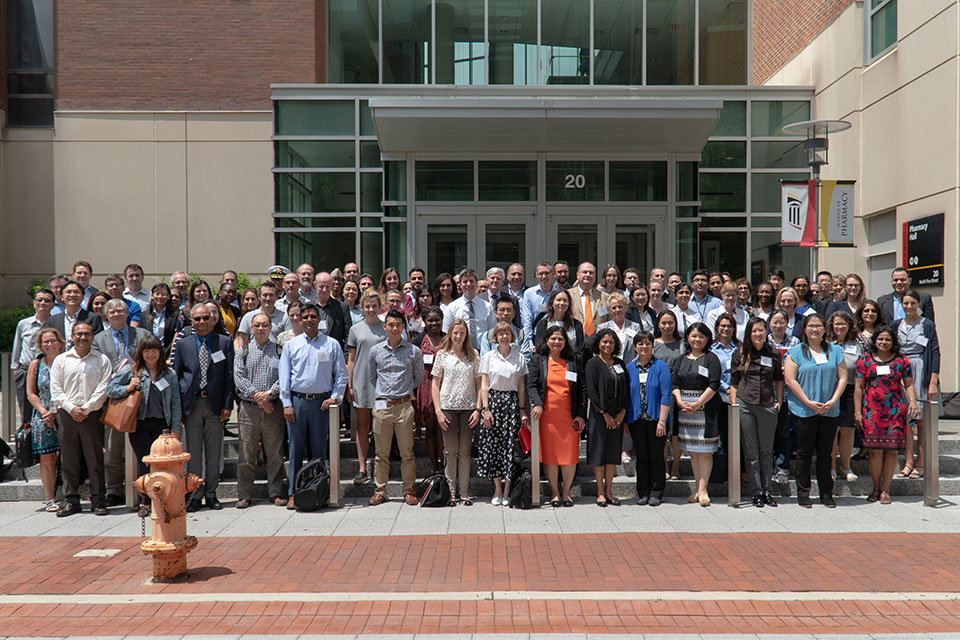CERSI Conference Spotlights Latest Advances in Topical Drug Development
Virtual event brings together more than 500 attendees, including stakeholders from the FDA, academia, and industry.

By Emily Rosenthal
August 24, 2020
The U.S. Food and Drug Administration (FDA) and the University of Maryland Center for Excellence in Regulatory Science and Innovation (M-CERSI) co-hosted the virtual “Topical Drug Development – Evolution of Science and Regulatory II” workshop on July 23-24. This meeting brought together 569 attendees, including stakeholders from the FDA, academia, and industry. The peak online attendance at one time was 370 participants.
The meeting aimed to facilitate discussion about design elements and concerns of both in vivo and in vitro methods in the new drug and over-the-counter drug space; present recent advances and examples of the use of in vitro and in silico methods in the assessment of dermal absorption from both a new drug and generic drug development perspective; provide an update on the process of developments in the area of sunscreen and topical antiseptic absorption; and stimulate discussion between interested parties in the evolution of science in the area of topical drug development and dermal absorption testing.
The workshop also highlighted advances in the recent assessment of dermal penetration using in vivo, in vitro, and in silico models. The agenda built on the successful topical drug development workshop sponsored by M-CERSI in July 2019.
Presentations delivered on July 23 focused on challenges in topical drug development. Morning discussions centered on these challenges – and solutions – as related to harnessing in vitro methods. Audra Stinchcomb, PhD, professor in the Department of Pharmaceutical Sciences (PSC) at the University of Maryland School of Pharmacy, began the workshop with introductory remarks, followed by a videotaped welcoming address from Janet Woodcock, MD, director of the FDA Center for Drug Evaluation. Woodcock’s remarks highlighted the importance of development in the area of dermal absorption, considering recent FDA publications in this area. E. Dennis Bashaw, PharmD, senior science advisor to the director of the Office of Clinical Pharmacology at the FDA and meeting co-chair, then provided participants with a brief history of assessment of dermal absorption and the need to develop new methods.
The July 23 morning session included three presentations:
- Advances in Topical Bioequivalence Assessments: Characterization-Based Approaches (Sam Raney, PhD)
- Environmental Harmonization in Multi-Application Sunscreen Use: In Vitro Permeation Testing to Healthy Volunteers (Audra Stinchcomb, PhD)
- Trifarotene Creme (AKLIEF): Formulation Screening from In Vitro Permeation to Testing to Clinical Studies (Nathalie Wagner, MS)
The afternoon session focused on harnessing in silico methods to combat challenges in topical drug development. Da Zhang, PhD, staff fellow in the Office of Clinical Pharmacology at the FDA, led the afternoon session, which included four presentations, a panel discussion, and a question and answer session for meeting attendees. Questions were captured via the “Q&A” WEBEX feature.
The July 23 afternoon session presentations included:
- Modeling Dermal Drug Absorption from Complex Semisolid Formulations: Insights from Multi-Phase, Multi-Layer MechDermA Model (Sumit Arora, PhD)
- Computational Modeling of Absorption from Complex Topical Formulations (Jessica Spires, PhD)
- A Workflow for Mechanistic Dermal Model Optimization and In Vitro-In Vivo Inference (Abdullah Hamadeh, PhD)
- Design of MUsT and Leveraging MIDD (Vivek Purohit, PhD)
Meeting attendees virtually re-convened for another set of morning and afternoon sessions on July 24. After additional welcoming remarks from Stinchcomb, Bashaw kicked off the morning session, titled “Dermal Absorption of Sunscreens and FDA Rulemaking: Moving Forward.” The July 24 meeting’s morning session featured the following deliveries:
- AAD and Sun Protection (Henry Lim, MD)
- An Overview of Absorption and Skin Factors (Sheila Friedlander, MD)
- Current Program Update (E. Dennis Bashaw, PharmD)
- FDA Sunscreen Absorption Study Part 2 (Murali Matta, PhD)
- FDA Sunscreen Study of Totality of Data (Jeff Florian, PhD)
“Topical Drug Development – Evolution of Science and Regulatory II” concluded with the July 24 afternoon session, “Current Methods and Looking Forward.” Soo Shin, PhD, clinical pharmacology reviewer at the FDA, led the final session, which included four presentations, a panel discussion, and a question and answer session involving all speakers from the two-day event.
Presentations delivered during the July 24 afternoon session included:
- MUsT and Dermal New Drug Applications (Chinmay Shukla, PhD)
- Master MUsT Elements (Luke Oh, PhD)
- FDA Modeling of Sunscreen (Da Zhang, PhD)
- FDA In Vitro Testing of Sunscreen Permeation (Yang Yang, PhD)
Following the meeting, an invitation to publish a workshop report was received and accepted from the journal Photodermatology, Photoimmunology, & Photomedicine.*
Meeting recordings and slideshows can be found online.
This workshop was supported by the Food and Drug Administration (FDA) of the U.S. Department of Health and Human Services (HHS) as part of a financial assistance award U01FD005946 totaling $5,000 with 100 percent funded by FDA/HHS. The contents are those of the author(s) and do not necessarily represent the official views of, nor an endorsement, by FDA/HHS, or the U.S. Government.
*The official publication of the Photodermatology Society, the British Photodermatology Group, the European Society for Photodermatology, the Korean Society for Photomedicine and the Taiwanese Photomedicine Society: https://onlinelibrary.wiley.com/journal/16000781.



